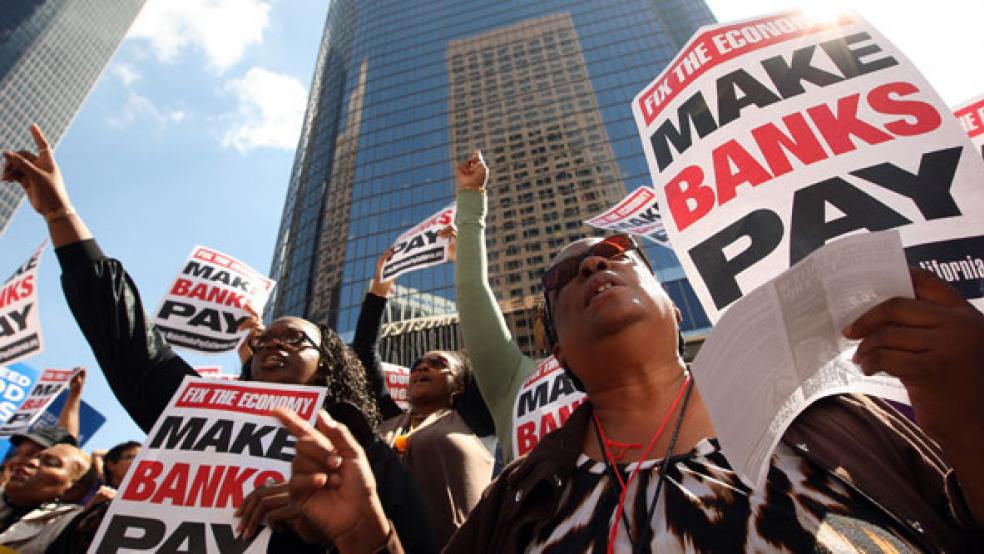The Treasury Department, just last week, assured lawmakers and taxpayers that new safeguards put in place by the Dodd-Frank Act after the financial crisis mean that U.S. taxpayer would never again be on the hook for the bailout of a large financial institution.
On Tuesday, the Federal Deposit insurance Corporation and the Federal Reserve Board announced that, so far at least, a key element of one of those safeguards was not reliable.
Under the law, banks with consolidated assets of $50 billion or more, and certain other financial firms, are required to give regulators a resolution plan, commonly called a “living will.” The resolution plan is supposed to provide the FDIC with a comprehensive plan to sell off a bankrupt firm’s assets and settle its debts using the “Orderly Liquidation Authority” granted to the agency under Dodd-Frank.
Related: A Modest Proposal for Eric Holder – Back Off the Banks
The OLA is one of the elements of Dodd-Frank meant to eliminate the perception that some banks are “Too Big to Fail” – meaning that their combination of size and interconnectedness could cause a cascading crisis of failures if one should go bankrupt.
The Dodd-Frank law specifically outlaws bailouts of large banks, and the aim of the OLA is to create an alternative way to let a huge institution fail without taking the rest of the economy with it.
As part of the implementation of the law, last year, 11 large banks submitted resolution plans to regulators. It was the second go-round, as they had first offered living wills in 2012 that the regulators found unsatisfactory. The news yesterday wasn’t much better, as the FDIC and Federal Reserve announced they had sent all 11 plans back to be rewritten.
Related: Why Too Big to Fail Is a Bigger Problem than Ever
In a press release, the agencies said that while all the plans had individual problems, there were a number of issues common to all of them, including “assumptions that the agencies regard as unrealistic or inadequately supported, such as assumptions about the likely behavior of customers, counterparties, investors, central clearing facilities, and regulators.” Regulators also noted “the failure to make, or even to identify, the kinds of changes in firm structure and practices that would be necessary to enhance the prospects for orderly resolution.”
The regulators continued, “Based on the review of the 2013 plans, the FDIC Board of Directors determined…that the plans…are not credible and do not facilitate an orderly resolution under the U.S. Bankruptcy Code. The Federal Reserve Board determined that the 11 banking organizations must take immediate action to improve their resolvability.”
Critics of the Dodd-Frank Act pounced, saying that the agencies’ finding proves that, even now, large banks would still have to be bailed out in the event of a bankruptcy filing.
Related: The Next Financial Crisis Is Brewing Right Now, and Regulators Are Missing It
This is one of the three legs of the stool from Dodd-Frank, and they just had it kicked out from under them,” said Prof. Cornelius Hurley, who directs the Boston University Center for Finance, Law & Policy. “It validates what almost everybody that has taken a look at the plan thinks. I say hooray for their candor."
Not surprisingly, the banking industry had a different take.
“When everybody fails the test it says as much about the test as it does about the tested,” said Wayne Abernathy, executive vice president for financial institutions policy at the American Bankers Association. “It says we’re learning how to do this. It’s a brand new idea.”
He added, “Regulators were really unspecific about what they wanted. The statement today just reinforces that they are just trying to work their way through this.”
Top Reads from The Fiscal Times





